Recognizing the War
We live in a time of walls. We always have of course, but there are periods of history in which those walls become more restrictive and in which newer walls are far too easily built. In an attempt to disprove the existence of these walls, the skeptic would point to the promise of the Constitution. “See, it’s all right here. There’s nothing to worry about.” Except there is, because often the most effective walls are those that aren’t enshrined by law but in culture instead.
That is a war that the less conservative among us have been failing at badly. Let’s face it, most non-conservatives outside of minority groups didn’t even realize there was a war until relatively recently, even though more socially conservative groups have been fighting it for years.
outside of minority groups didn’t even realize there was a war until relatively recently, even though more socially conservative groups have been fighting it for years.
The election was the dawning of a new era, because not only was it the beginning of what is looking to be a drastic change in direction for the United States, but because a good many people finally woke up to the war and saw the strength of the opposition.
Walls That Protect, Walls That Imprison
So we now find ourselves in a time of walls, but more accurately, in a time of walls that are beginning to encroach on the meagre areas we’d previously kept while believing ourselves to be free – ironic when one considers that our president-elect included a promise to build a wall in his election campaign promises.
But this post isn’t about those physical walls that are built, immigration law, or the election. There are plenty of places that are discussing all of the above ad nauseum and only adding more noise to the cacophonous furor that is social media. Besides, what would be the point of that on a magic blog?
This post is about walls from a magical perspective, the kinds of walls, their origins, and what we can do to tear them down in our own lives and practices.
Most walls are erected against the unknown dangers that lurk beyond the safety of the hearth. Since the beginning of human history, mankind has created enclosures around his dwellings in order to delineate ‘inner’ as opposed to ‘outer’, and more importantly ‘safe’ from ‘potentially unsafe’. From this view, not all walls are bad. However, a wall can just as easily be employed for constraint as for protection, and that is the kind of wall I’m writing about here.
How A Foundation Was Built

In the beginning, after some clarting about, the Bible tells us that the Jewish god created a man by the name of ‘Adam’, and a woman by the name of ‘Eve’. The Alphabet of Ben Sira places Eve as Adam’s second wife, a kind of replacement for Lilith who, made of dirt as Adam was, refused to obey and become subservient to him. After all, why should she if they were made of the same materia magica? Lilith then left and refused all attempts to compel her to return to a life of drudgery with Adam.
To circumvent this with woman 2.0, Eve was created from a piece of Adam so that she would have no claim to equality. It would be her lot in life to obey. This would form the foundations of one of the first walls. However, that was not the only foundation found in the myth of utopian Eden. Eve, or indeed every woman she represents, would play a far more damaging role in the mythological history of humankind.
The Garden of Eden is described as a paradise in which its inhabitants neither wanted for anything, nor knew the kind of trouble that disturbs the mind. It is the perfect place created by a loving father god for his children, but with one significant catch: eating of the tree of knowledge of good and evil was forbidden.
When you pare down this myth, when you remove the language of paradise and lack of want, what you are left with is an enclosure of sorts that is inhabited by people who are kept naked, ignorant, and obedient. From this perspective, the Fall of Man looks more like a jailbreak from an unethical science experiment than the disastrous curse upon humanity that it is often presented as.
What of the serpent, though? It seems impossible to extricate the serpent from Eve herself, the name ‘Eve’, or its Hebrew form ‘Hawwah’ being possibly related to the Hebrew word for ‘serpent’. Watch out for the snakes, it’s all  about the snakes. Were it not for the serpent’s temptation, Eve would have never eaten from the tree of knowledge of good and evil, nor would Adam, and mankind would still apparently be living it up in the garden of Eden.
about the snakes. Were it not for the serpent’s temptation, Eve would have never eaten from the tree of knowledge of good and evil, nor would Adam, and mankind would still apparently be living it up in the garden of Eden.
Just ignorant and naked, with no right to one’s body or mind.
Since the Fall, women have been held to be the disobedient and destructive sex, our wombs and vaginas passageways to filth and depravity, and our only salvation to be found in obeying men. In other words, our salvation is to be found in becoming the property of and putting ourselves firmly under the control of men.
“In pain shall you bring forth children, woman, and you shall turn to your husband and he shall rule over you. And do you not know that you are Eve? God’s sentence hangs still over all your sex and His punishment weighs down upon you. You are the devil’s gateway; you are she who first violated the forbidden tree and broke the law of God. It was you who coaxed your way around him whom the devil had not the force to attack. With what ease you shattered that image of God: Man! Because of the death you merited, even the Son of God had to die… Woman, you are the gate to hell. -Tertullian, On the Apparel of Women, chapter 1
This is the foundation of one of the walls in our society, and a wall that for all of our advances in women’s rights, remains one of the strongest to this day. If anything, this wall is being rebuilt in the places where it was torn down, fortified, and new construction sites opened up. We see this in everything from the rise of MRAs, the increased attacks on reproductive freedoms, to the renewed popularity of the insult ‘cuck’ (a word deriving from ‘cuckold’ meaning ‘husband of an adulteress’, in other words, a man who was not able to control his woman – his property – well enough to prevent her from disobeying). On more subtle levels, we may even see the maintenance of and reinforcement of this wall in the censure of opinionated women in communities that might otherwise extol their own perceived egalitarian nature.
This is not the only wall either, I’m sure we could all think of more walls in our lives. Walls that affect how we see and deal with people of color, walls that affect how people of color must move in the world in order to do so with less harassment, walls that mandate that only one kind of sexual relationship is valid, walls that enforce gender binaries that harm people who simply just don’t fit in those boxes…well, you get the idea.
And all the while, we’re told that without those walls there would be chaos, anarchy, the destruction of order. The people of color will want revenge will come and get you without that thin blue line. Men won’t be able to control women and will end up in some 70s B-movie scenario in which men are enclosed in the same walls women are now. The gays will gay up your kids and people will invent new genders. People will marry outside their own cultures, no one will be able to say “Merry Christmas”, and it will probably also rain. We need the wall, the katechon, that which holds back all of those things they’ve taught you to fear.
Look at the media today, how much of it is focused on emphasizing the things that must be held back? How much of it justifies all those barrier construction projects? We need to do better than we are at recognizing it all, at taking a deep breath and deciding what to listen to and what to ignore. How many of our friends are complicit in this on social media? How many have swallowed the propaganda hook, line, and sinker? The first step for all of us is recognizing where the lines are drawn in our outer lives.
But this would not be a magic blog were I only to speak of the outer and political. Here is a place to discuss the inner too.
Or more specifically, once more the realm of dream.
The War on Dream
“Dream, I will argue, is made. The metaphor that first needs to be grasped is one that bears repeating, that of a war on dreaming. The decisive action here is the one embarked upon by John of Patmos, another exile bound to a far flung isle. His was a deliberate action which set out to not merely loose chimeras in the garden of the mind, but to bar the gates of dream itself. So this is where we decant our vitriol and dissolve the locks that John applied, which State and church imposed. This is by no means the end of the process, but the point at which we choose to begin.” – Apocalyptic Witchcraft, Peter Grey
 Dream is a special state of being, one we tend to think of as a place of infinite possibilities in which we may do or experience any number of things that we cannot during waking life. However, from the work of scholars like Lisa Bitel and Jacques LeGoff, we know that our inner dreamscapes are in all likelihood artificially limited. That there are walls there. These are not walls that we can necessarily see from within dream for ourselves – after all, how can we know about the walls if they were set there long before we ourselves even had a chance to dream? However, there is a paper trail that can be followed that shows how clerics attempted to control dreamers and restrict the dreams themselves.
Dream is a special state of being, one we tend to think of as a place of infinite possibilities in which we may do or experience any number of things that we cannot during waking life. However, from the work of scholars like Lisa Bitel and Jacques LeGoff, we know that our inner dreamscapes are in all likelihood artificially limited. That there are walls there. These are not walls that we can necessarily see from within dream for ourselves – after all, how can we know about the walls if they were set there long before we ourselves even had a chance to dream? However, there is a paper trail that can be followed that shows how clerics attempted to control dreamers and restrict the dreams themselves.
If that very idea doesn’t make you angry, I don’t know that anything can be done for you.
It wasn’t enough to control the waking world, they had to try and find ways to control and restrict the dreaming world too. Dreams came to be labelled as ‘devilish illusion’, and true dreams the sole domain of an elite of saints and Christian kings. Oneiric diversity withered, and the dreams of the common man evaporated from record like the dream that flees upon waking. Nowadays, a medium through which one might have previously entered into the Otherworld of one’s cultural and physical landscape stands weakened by ridicule, pop-psychology, and petty dream dictionaries that tell you nothing.
But we need to be able to dream, and we need to be able to dream fully, because it is through dream that we have some of our most effective communications with the Other. Without that, we will never fully pull down the walls of Christian worldview in our minds, or have those better ideas for new ways of doing things that our world so desperately needs.
The Fight
When I first started to perform the Stele of Jeu ritual from the Greek Magical Papyri (PGM), it was, like for many others who begin this work, initially for the purpose of attaining the knowledge and conversation of a ‘holy guardian angel’ (in my case, more a daimon in the Greek sense). However, the more I performed it, the more I noticed that it was far more important than that. The Stele of Jeu is a freeing ritual, a ritual of unbinding and empowerment. It’s a ritual that tears down walls.
“Holy Headless One, deliver me from all restraining daimons and misfortune”
In Chaos Protocols, Gordon White observes that “One thing I will say with every confidence is that your dreams will certainly get a lot more interesting” as a result of performing the ritual, and I’ve found this to absolutely be the case. My dreams are now far deeper and coherent. They feel far less random and more like I am dealing with other intelligences and indeed, another world.
Yet it does not seem to be an effect that lasts perpetually. There is a drop-off in dreaming quality if I do not perform the rite on a regular basis. My dreams become shallow once more, punctuated only by the rare shining gem of a dream that happens to break through the morass of whatever unseen effects are at work in dream. The wall is resurrected once more and must be torn down anew in order to continue.
A Hidden Front In Plain Sight
We are very mistaken if we think there isn’t some kind of metaphysical war aspect to all of this too. How many of you have ever heard of Christian ‘prayer warriors’? Have you ever read their prayers, or what should more accurately be called spells? Just because they are addressed to the Judeo-Christian god or Jesus does not mean that they aren’t spells; the Grimoires are full of spells with similar language. What of the pope’s decree that Catholics only now store the ashes of their dead in special church-approved places? The dead are mighty, and such a place might be viewed as a source of power for a church that historically hasn’t been exactly shy about using its own magic. And what of the power of meme? We don’t often think of meme as being a potentially magical thing, but when you think about the ways in which memes are similar to sigils in Chaos magic, then they take on another aspect.
“Does not matter, need not be.”
How many of us see a meme, invest emotion into it (usually anger or amusement), and then either scroll on or engage with the discussion around the meme before scrolling on? At least sigil magic is done with intent. See, it is really that nefarious.
There is much to be unwoven here, a lot of unnecessary things that need to be pared away, and walls to be torn down both in our outer and inner lives. Becoming aware of those walls, and how they are built is only the first step. The next step is working consciously to bring them down through deliberate action, but we can only do that if we first free ourselves, and most importantly our inner worlds. Lastly, we need to counter the magic that enslaves dream and mind, finding ways to appeal to the hearts and minds of others – the Berlin wall was not torn down by the hands of a few, but by many. If there is anything this past election should have taught us, it’s that haughty cold logic and the mere presentation of that which holds back all that is bad is not enough. We need symbols and messages that appeal to not only minds, but hearts and souls too.
both in our outer and inner lives. Becoming aware of those walls, and how they are built is only the first step. The next step is working consciously to bring them down through deliberate action, but we can only do that if we first free ourselves, and most importantly our inner worlds. Lastly, we need to counter the magic that enslaves dream and mind, finding ways to appeal to the hearts and minds of others – the Berlin wall was not torn down by the hands of a few, but by many. If there is anything this past election should have taught us, it’s that haughty cold logic and the mere presentation of that which holds back all that is bad is not enough. We need symbols and messages that appeal to not only minds, but hearts and souls too.
There’s a war on, and it’s about time we fought back.





 headed god of primordial darkness. Counted among the Ogdoad, Kek was one of eight primordial Old Kingdom deities that were considered ancient even by the time of the composition of the Pyramid Texts (officially 2400-2300 BCE, although that is debated). Kek was the ‘bringer of light’, the chaotic darkness that heralded the new dawn – or at least that’s how the denizens of 4chan have taken him to be. For the users of 4chan, all of this added up to one thing: Trump was ‘god’s chosen candidate’.
headed god of primordial darkness. Counted among the Ogdoad, Kek was one of eight primordial Old Kingdom deities that were considered ancient even by the time of the composition of the Pyramid Texts (officially 2400-2300 BCE, although that is debated). Kek was the ‘bringer of light’, the chaotic darkness that heralded the new dawn – or at least that’s how the denizens of 4chan have taken him to be. For the users of 4chan, all of this added up to one thing: Trump was ‘god’s chosen candidate’. pandering by the press, a showing of any weakness from Clinton was welcomed by the opposition. A day later, the
pandering by the press, a showing of any weakness from Clinton was welcomed by the opposition. A day later, the  P.E.P.E
P.E.P.E

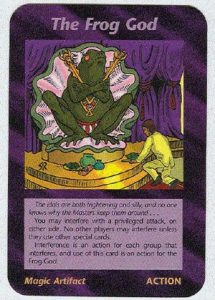
 Although the hieroglyphs indicate that the statue is in fact depicting Heqet, a goddess of fertility that also has the form of a frog, that ultimately doesn’t matter to the Kekists who have purchased it. For them and everyone else who doesn’t read hieroglyphs, the symbolism is clear, and in a world of meme, that’s all that really matters. A cursory search of Pepe and Kek-related goods on Amazon also reveals an awareness by participants in the various 4chan-originated memes and meme wars. Among Kek/Pepe-related booty to be found on Amazon are books on Kek’s cult, and more significantly, books on Kek/Pepe internet meme magic.
Although the hieroglyphs indicate that the statue is in fact depicting Heqet, a goddess of fertility that also has the form of a frog, that ultimately doesn’t matter to the Kekists who have purchased it. For them and everyone else who doesn’t read hieroglyphs, the symbolism is clear, and in a world of meme, that’s all that really matters. A cursory search of Pepe and Kek-related goods on Amazon also reveals an awareness by participants in the various 4chan-originated memes and meme wars. Among Kek/Pepe-related booty to be found on Amazon are books on Kek’s cult, and more significantly, books on Kek/Pepe internet meme magic.

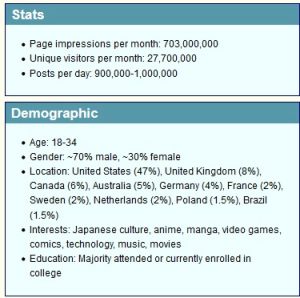



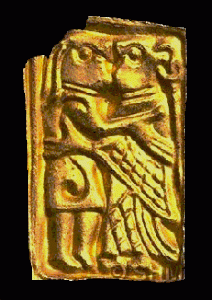
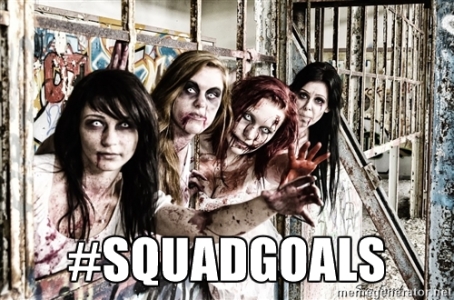






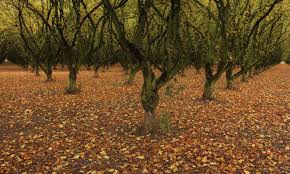 trancing-while-asleep part from each other. I’ve found the latter mostly only comes when doors must be beaten down and messages gotten across, and the day afterwards is always marked by the rough dragging of exhausted limbs. Whether you are awake or asleep, trance is work. Most
trancing-while-asleep part from each other. I’ve found the latter mostly only comes when doors must be beaten down and messages gotten across, and the day afterwards is always marked by the rough dragging of exhausted limbs. Whether you are awake or asleep, trance is work. Most  people don’t see this fork or experience anything but dream. But for those of us that do this kind of work, it seems to be the case that the more you do the work, the more that fork in the road is revealed.
people don’t see this fork or experience anything but dream. But for those of us that do this kind of work, it seems to be the case that the more you do the work, the more that fork in the road is revealed. home. He’d had a dream about the duel and seen himself get wounded in the face before killing his opponent. To Innes’ amazement, there was a large red welt upon the man’s face which he claimed was dream-gotten. Shortly after that, the other man also called Innes to his home with a strange story of a dream. In it, he had seen himself killed and was subsequently more than happy to issue an apology.
home. He’d had a dream about the duel and seen himself get wounded in the face before killing his opponent. To Innes’ amazement, there was a large red welt upon the man’s face which he claimed was dream-gotten. Shortly after that, the other man also called Innes to his home with a strange story of a dream. In it, he had seen himself killed and was subsequently more than happy to issue an apology.
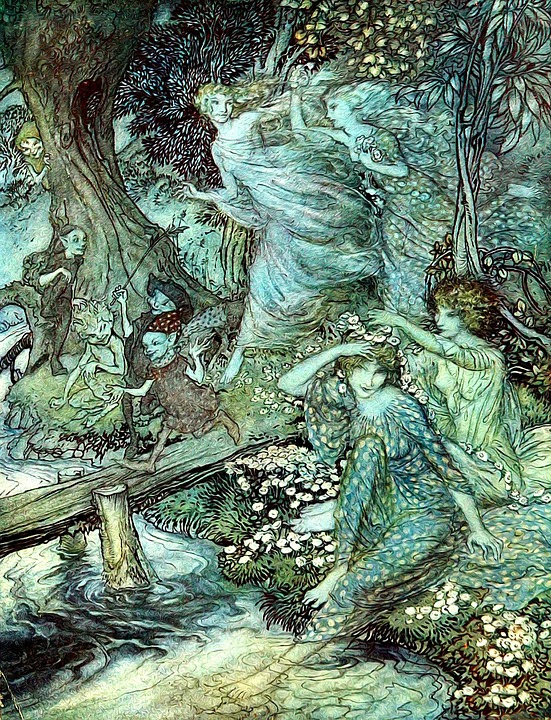
 dwelled upon it. Of course, this onion also affects the kinds of Unseen that might be there: the types of Unseen, their attitudes towards humans, how they expect interactions to look, the pacts that were made between humans and Unseen in years past, and the kinds of offerings they like. Sometimes these layers are things that you might expect. After all, who doesn’t expect Native American layers, and other layers made up of mostly Christianity in America? But even in America, there are also often layers that are far less expected – like the layer of occultism derived from
dwelled upon it. Of course, this onion also affects the kinds of Unseen that might be there: the types of Unseen, their attitudes towards humans, how they expect interactions to look, the pacts that were made between humans and Unseen in years past, and the kinds of offerings they like. Sometimes these layers are things that you might expect. After all, who doesn’t expect Native American layers, and other layers made up of mostly Christianity in America? But even in America, there are also often layers that are far less expected – like the layer of occultism derived from 
 In other words, if space is a container for action, actions set down layers (which call other similar actions to themselves), and there is a force that ensures that those contexts are revisited, then it would stand to reason that spaces have ‘patterns’ or contexts that get revisited again and again. Not only that, but these patterns don’t just affect humans; as the first Bauschatz quote says, these spaces-as-containers-for-action also seem to apply other beings too. Or at least that’s the best guess of what Germanic Heathens thought about the matter during the Heathen period.
In other words, if space is a container for action, actions set down layers (which call other similar actions to themselves), and there is a force that ensures that those contexts are revisited, then it would stand to reason that spaces have ‘patterns’ or contexts that get revisited again and again. Not only that, but these patterns don’t just affect humans; as the first Bauschatz quote says, these spaces-as-containers-for-action also seem to apply other beings too. Or at least that’s the best guess of what Germanic Heathens thought about the matter during the Heathen period.




 In the first book of the Encyclopedia,
In the first book of the Encyclopedia, tradition. The PGM date from between 200 B.C.E and 500 C.E, and are the product of intense cross-cultural interaction and blending in the Mediterranean. Kadmus sums this up best when he writes in his review that the PGM are “just as much Egyptian Magical Papyri as Greek ones”.
tradition. The PGM date from between 200 B.C.E and 500 C.E, and are the product of intense cross-cultural interaction and blending in the Mediterranean. Kadmus sums this up best when he writes in his review that the PGM are “just as much Egyptian Magical Papyri as Greek ones”. without the benefit of reading the Encylopedia, I think that if there’s one thing the grimoires teach us, it’s that the world was never so simple. Cultures interacted, people traveled, aspects of the ‘not us’ found their way in to the ‘us’, and the world marched ever on. Traditions grew, metamorphosed, and sometimes even died. The Armadel method was transmitted, spirit lists persisted (
without the benefit of reading the Encylopedia, I think that if there’s one thing the grimoires teach us, it’s that the world was never so simple. Cultures interacted, people traveled, aspects of the ‘not us’ found their way in to the ‘us’, and the world marched ever on. Traditions grew, metamorphosed, and sometimes even died. The Armadel method was transmitted, spirit lists persisted (







